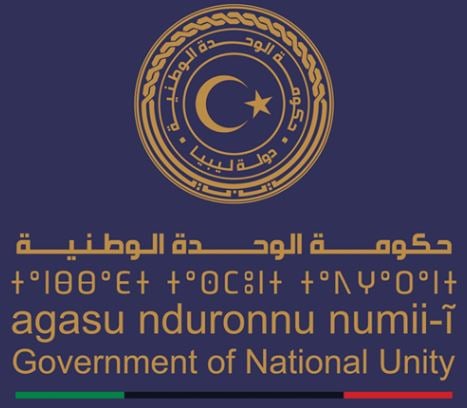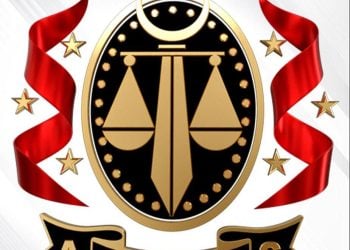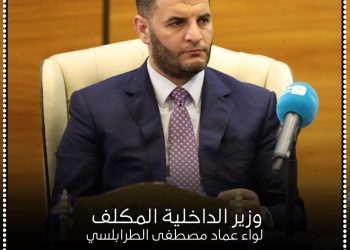In a widely leaked official letter to the Governor of the Central Bank of Libya (CBL), Naji Issa, the Tripoli based Libyan Prime Minister, Abel Hamid Aldabaiba, called on the CBL to take urgent measures to ensure full transparency in the financial statements/data related to foreign exchange.
Aldabaiba was responding to the CBL’s recent statement on revenue and spending during the period 1 January to 28 February 2025, which he queried in terms of accuracy. Aldabaiba indicated that the CBL’s financial reports did not provide a comprehensive picture of the financial situation.
Tensions between the PM and the CBL Governor, again?
The letter highlights emerging public tensions between Aldabaiba and the relatively new CBL Governor Issa. This recalls the long tensions that existed between Aldabaiba and the outgoing CBL Governor, El-Kaber.
CBL data incomplete?
In his letter to CBL Governor Issa, Aldabaiba stated that the state budget achieved a surplus of 9.6 billion Libyan dinars during the period from January 1 to February 28, 2025.
Omission of tax on sale of FX
However, Aldabaiba stressed that the data provided by the CBL for the period did not include revenues resulting from the fee imposed on the sale of foreign exchange, which amounted to 4.4 billion dinars. By including these revenues, the total surplus reaches 14 billion dinars.
Aldabaiba also pointed to an unprecedented increase in demand for foreign exchange during the last quarter of 2024 and the months of January and February 2025.
Need to routinely provide the government with CBL financial statements
Aldabaiba also called for the need for the CBL to refer periodic and regular statements of the assets and liabilities of the CBL, to the Council of Ministers at the end of the last day of each month, in implementation of the provisions of Article 24 of Law No. (1) of 2005 on banks.
In his letter, Aldabaiba said that the continued emergence of the interim trade deficit in the state’s trade balance, which is estimated at US$ 2.5 billion during the period, is directly related to the creation of money in the economy.
Where is the money buying FX coming from?
He also added that the noticeable increase in the demand for foreign exchange during the last quarter of 2024, and the months of January – February 2025 at unprecedented rates raises questions that require more disclosure of the sources of funds related to the demand for foreign exchange in accordance with the requirements of Law No. (2) of 2005 on combating money laundering and its executive regulations.
Public spending inaccurately blamed for high FX spending
Aldabaiba said public spending during the period amounted to 8.4 billion dinars while foreign exchange revenues supplied by the Ministry of Oil and the National Oil Corporation during the period amounted to $ 3.6 billion.
However, commercial banks’ use of foreign exchange amounted to 90.5% or US$5.5 billion of total foreign exchange uses during the period.
He said the use of foreign exchange by the government apparatus and its affiliates amounted to only 9.5% or $ 581 million of the total foreign exchange uses during the period.
He added that the link between high demand for foreign exchange and public spending is ‘‘part of the truth – and not the whole truth’’.
He said the CBL figures indicated that foreign exchange revenues amounted to US$ 3.6 billion, while public spending did not exceed US$ 1.5 billion, with a surplus of US$ 2.1 billion.
Public spending not to blame?
Focusing on public spending to control the demand for foreign exchange, Aldabaiba stressed, has not and will not lead to any solutions to control the trade balance because it represents a small part of the problem and not the main problem that belongs to the banking system, especially with the continued rise in deposit liabilities of commercial banks, which are directly related to the creation of money.
AML is the CBL’s job
Deflecting and putting the onus on the CBL, Aldabaiba said the commitment to seek balance and financial stability by exerting due professional care regarding the sources of funds that require foreign currency rests with the Central Bank.
Concluding, Aldabaiba said Libya is going through a pivotal stage that requires taking a serious stand to address these problems, hoping that the CBL will take the necessary measures to address them and ensure full transparency in the financial statements related to foreign exchange.
Background
Aldabaiba’s reaction to the CBL’s January to February 2025 revenue and spending figures, and specifically to the high use of foreign currency, comes in reaction to criticism that the overuse and resulting deficit in foreign currency use is as a result of government overspending.
The foreign exchange deficit is also being blamed as the cause of the low Libyan dinar exchange rate.
Division of power, political split and void left by parliament
The tug-of-war between Aldabaiba and the CBL Governor also continues a tradition, since the 2011 revolution that ended the 42-year Qaddafi regime, as to who has the final say between the government of the day and the CBL on how much money is spent and how it is spent in a rentier state.
(For a more detailed recent discussion, see: Op-Ed: Government over-spending to lead to economic and political stability or bankruptcy and a devalued dinar?).
In mature or stable political states, these questions are usually decided by parliament and mandated or rejected by periodic elections. But the political split in Libya between the country’s internationally recognised government based in Tripoli and the internationally recognised parliament based in the east means there is a huge void. The Tripoli government has no traction in the east and most of the south, while the eastern based parliament has appointed its own (internationally not recognised) government – and both have no traction in Tripoli and most western Libya.
Hence, there are not the usual checks and balances in Libya’s relatively weak political system, and successive governments pander to public pressure to spend more to compensate for political weakness and a lack of a mandate.
Successive governments since the 2011 revolution feel that they can spend their way to economic and hence political stability. Aldabaiba likes to spend on projects which he sees add to stability.
.
CBL’s latest revenues and spending data reveals a dinar surplus but a dollar deficit
Government spending on projects:
Tripoli government completes or launches 68 new projects in February 2025
Aldabaiba relaunches construction of Tripoli Gate’s Zumurrud Shopping Mall on Airport Road
Al-Andalus Marina opened by PM as part of 17 February anniversary celebrations
Aldabaiba launches vital sewage treatment plant and water drainage line projects in Tripoli
Aldabaiba opens the International Advanced Surgery Centre – to be operated by Spanish specialists
43 new projects will be launched in 2025 – including the completion of Tripoli International Airport
Aldabaiba launches vital sewage treatment plant and water drainage line projects in Tripoli
Aldabaiba follows up on 52 projects in 2025 – including in infrastructure, transport and health
China’s OVM celebrates its contribution in Libyan construction projects, including Third Ring Road






